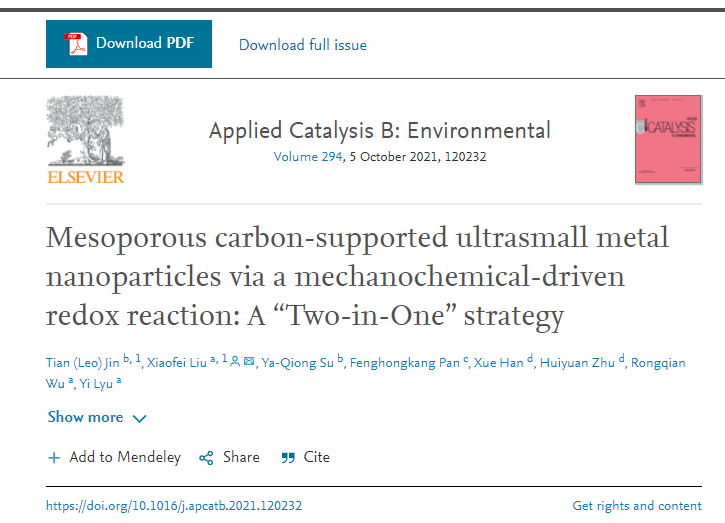Ultrasmall metal nanoparticles (MNPs) can spread widely in vivo and enter cells through body fluid circulation due to high specific surface area and ultrasmall size. Consequently, MNPs have broad application prospect in targeted detection, drug and gene delivery, disease diagnosis and treatment and imaging,etc. However, current preparation and synthesis of nanomaterials still depend on traditional liquid-phase synthesis technique, which features tedious procedures, long time-consuming, high cytotoxicity which is difficult to eliminate, and unguaranteed active sites. Therefore, it is an urgent task to explore a simple, green and highly-efficient synthesis approach for nanomaterials.
To resolve this issue, Surgical Dreamworks has developed a "two-in-one" preparation strategy, which combines the synthesis of mesoporous carbon with ultrasmall MNPs. It takes only 15 minutes to quickly prepare the required nanomaterials by mechanochemical ball milling strategy at room temperature. This method circumvents high-temperature pyrolysis, simplifies tedious procedures, shortens the time course and significantly increases the active sites on the MNPs surface compared with mechanochemical-driven method. It not only provides a novel option for the synthesis of carbon-supported ultrasmall MNPs, but also offers a new direction for the potential application of new nanoparticles in precise treatment, development of new drugs and new materials, and early clinical diagnosis and screening. In addition, this method is also applicable for a series of mesoporous carbon-supported ultrasmall noble MNPs, such as Rh, Ru and Pd,etc. Due to good biocompatibility, it has huge potential in drug loading, imaging, labeling and alternative fields.
Relevant results were reported in an article entitled “Mesoporous Carbon-supported Ultrasmall Metal Nanoparticles via a Mechanochemical-driven Redox Reaction: A “Two-in-One” Strategy” published in Applied Catalysis B: Environmental. Liu Xiaofei, a doctoral student, is the corresponding and co-first author of this article. The First Affiliated Hospital of Xi 'an Jiaotong University (XJTU) is the first corresponding affiliation.Applied Catalysis B: Environmentalhas an impact factor of 19.503 in 2021, ranking in Q1 in JCR of physical chemistry, chemical engineering and environment and Chinese Academy of Sciences.

Link:https://www.sciencedirect.com/science/article/pii/S0926337321003581